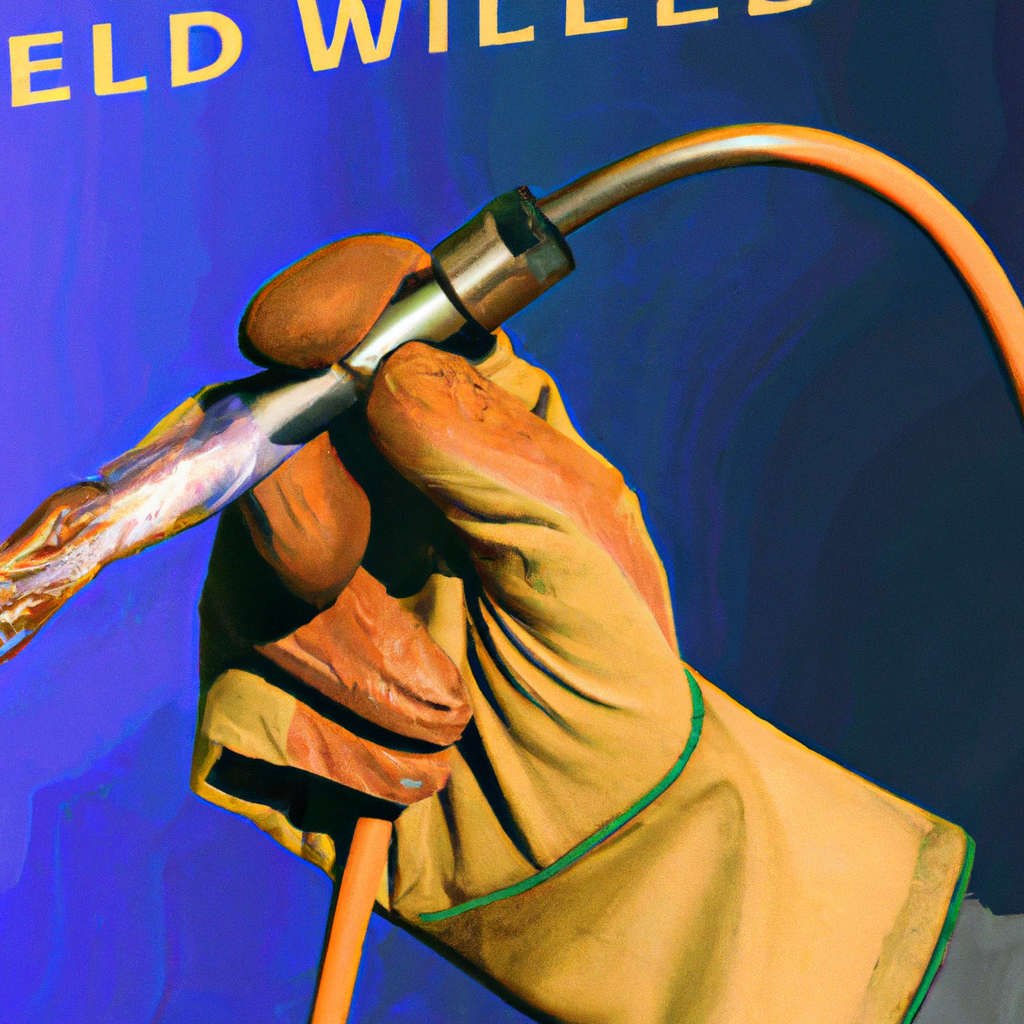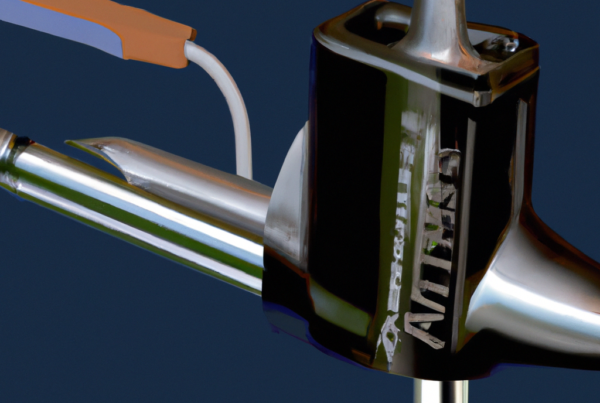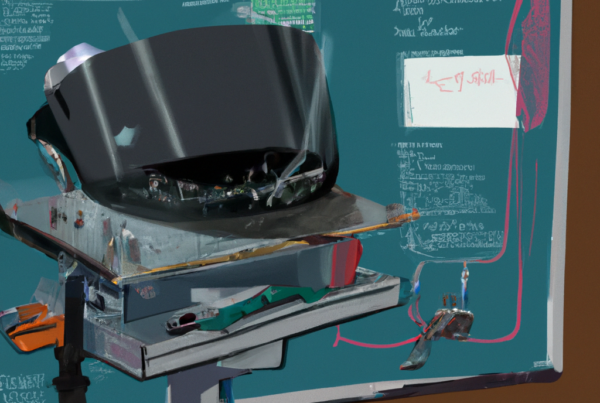Are you looking to become a master of stick welding? With the right technique, you can easily create strong and seamless welds with a stick welder. It’s all about understanding the basics and then taking the time to practice and refine your technique. In this guide, we’ll show you the basics of how to hold a stick welder so that you can get the best results every time. Learn the ideal angle to hold the electrode, the best way to grip the handle, and the importance of proper posture when welding. With this information, you’ll be welding like a pro in no time!

What type of stick welder should I use?
When it comes to stick welding, there are a few important decisions to make. The type of stick welder you use depends on your experience level, the type of materials you are welding, and the desired output. For output around 80 (maximum 120), you will want to use a DC stick welder. Here is how to hold a stick welder:
- Make sure the welding cable is properly connected to the welding machine and the electrode holder.
- Take the electrode holder in your dominant hand and position it over the workpiece.
- Position the electrode at a 45-degree angle and press it into the workpiece.
- Keep the electrode at a 45-degree angle and move it along the workpiece.
- Adjust the current and the welding speed as needed.
- Hold the electrode holder firmly and keep it at a 45-degree angle for the best results.
- Once the electrode is consumed, move the electrode holder away from the workpiece and turn off the machine.
With these steps, you should be able to properly and safely hold a stick welder. It is important to keep in mind that the output of the welder will depend on the type of material being welded and the experience level of the welder. Make sure to practice these steps in a safe environment before attempting to weld with a stick welder.
What safety gear is required?
When working with a stick welder, it is important to wear the proper safety gear. This includes:
- Safety glasses or a face shield
- Leather gloves
- Leather apron or welding jacket
- Long pants and a long-sleeved shirt
- Steel-toed boots
- Hearing protection
The safety glasses or face shield should be rated to protect your eyes from the intense light emitted by the welder. Leather gloves will help protect your hands from burns and sparks. A leather apron or welding jacket will protect your body from the same. Long pants and a long-sleeved shirt will also help protect your body from any sparks or molten metal. Steel-toed boots are a must, as they will protect your feet from any heavy objects that may be dropped. Lastly, hearing protection should always be worn to protect your ears from the loud noise emitted by the welder.
Safety is always the most important thing when using a stick welder. Make sure to take the time to put on the proper safety gear before beginning your project.
How do I determine the correct current settings for my electrode?
To determine the correct current settings for a stick welder, follow these steps:
- Select the electrode to be used. Electrodes are identified by the type of material being welded, the size, and the type of current (AC or DC) that will be used.
- Consult the electrode manufacturer’s recommendations for current settings. This information is typically provided on the electrode packaging.
- Select an amperage level that is appropriate for the electrode being used. The amperage level should not exceed the maximum rating for the electrode.
- Select a welding technique that will produce the desired weld results. Different techniques require different amperage levels.
- Perform a test weld to ensure that the amperage level is correct. This will allow you to adjust the amperage level if necessary.
The output should be set to between 80 and 120 amps, with 80 amps being the optimal setting. Test welds should be performed to ensure that the amperage level is correct and that the desired weld results are achieved.
How do I hold the electrode for welding?
Holding the stick electrode correctly is important for successful welding. Here are some tips on how to hold the electrode for welding:
- Wear the appropriate safety gear: welding gloves, a welding helmet, and welding jacket.
- Grasp the electrode holder in one hand, and the electrode in the other.
- Hold the electrode at an angle between 15 and 20 degrees.
- Keep the arc length as short as possible, usually no more than 0.5 cm (1/4 inch).
- Keep the electrode tip clean and dry.
- Maintain a steady, even speed when welding.
- Be sure to keep the electrode holder and electrode dry.
By following these steps, you can ensure that you are holding the electrode correctly for welding. This will help you achieve better results and reduce the risk of injury.
How do I make sure the arc length remains consistent?
To ensure the arc length remains consistent when using a stick welder, you should follow these steps:
- Set the amperage, or current, of the welder according to the type of electrode being used.
- Adjust the distance between the electrode and the metal being welded. This distance should be kept to a minimum, usually between 1/8 and 1/4 inch.
- Hold the electrode at a 90° angle to the metal. This will ensure the arc length is consistent.
- Move the electrode in a steady, controlled motion. This will ensure that the arc is continuous and the weld is consistent.
Following these steps will help ensure the arc length remains consistent and will result in a successful weld.
What should I do if the electrode sticks to the workpiece?
When using a stick welder, it is important to ensure that the electrode does not stick to the workpiece. If it does, there are a few steps you can take to correct the issue:
- Check the amperage. It is important to make sure that the amperage is set correctly. If it is set too low, the electrode may stick.
- Check the arc gap. If the arc gap is too small, the electrode is more likely to stick.
- Check the electrode. Make sure the electrode is the correct type for the job you are doing and that it is in good condition.
- Adjust the angle. If the electrode is at too high an angle, it may stick. Make sure that the electrode is at the correct angle for the job.
- Clean the surface. Make sure that the surface is clean and free of dirt or debris that could cause the electrode to stick.
By following these steps, you can help to ensure that the electrode does not stick to the workpiece while using a stick welder.
How do I strike and maintain the arc?
To strike and maintain an arc with a stick welder, follow these steps:
- Select the correct electrode, based on the material being welded.
- Position the electrode at a 90-degree angle to the surface to be welded.
- Hold the electrode approximately 1/8 to 1/4 inch above the surface.
- Strike the arc by briefly touching the electrode to the surface and quickly pulling it away.
- Adjust the distance between the electrode and the surface to achieve the desired arc length.
- Maintain a steady arc length and arc motion.
- Move the electrode in short, smooth strokes.
Practice striking and maintaining the arc until you are comfortable with the process. This will help you create a stronger, smoother weld.
How do I clean and inspect the weld after it is finished?
Once the weld is finished, it’s important to clean and inspect it properly. Here are the steps for doing so:
- Remove spatter and slag from the weld area with a wire brush.
- Visually inspect the weld for any visible defects.
- Check the weld bead for proper penetration.
- Inspect the weld for any corrosion.
- Check for proper weld size and shape.
These steps are important to ensure that the weld is of the highest quality. If any defects are found, it is important to correct them before continuing with the project.
How do I protect the welding area from sparks and spatter?
To protect the welding area from sparks and spatter, it is important to take the necessary precautions. Here are some tips on how to properly hold a stick welder:
- Wear the necessary safety equipment, such as a welding helmet, safety glasses, and heavy-duty gloves.
- Position the stick welder at a comfortable distance from the workpiece, and make sure the welding area is clear of any combustible materials.
- Adjust the power setting on the stick welder to the lowest setting that will produce a clean weld.
- Keep the welding area well ventilated, and use a spark arrestor to minimize the amount of sparks and spatter.
- When welding, keep the welding rod at a steady angle and move it in a smooth, continuous motion.
- After welding, turn off the power and wait for the welding rod to cool before setting it aside.
By following these steps, you can protect the welding area from sparks and spatter and ensure a safe and successful welding job.
What materials are best suited for stick welding?
Stick welding is a process that uses an electrode to create an electrical arc between the metal and the electrode. The heat from this arc melts the metal and creates a weld. To hold a stick welder, you will need to use the following materials:
- Welding rods
- A clamp for the electrode
- A welding helmet to protect your eyes
- Welding gloves
- Welding jacket to protect your skin
- A power source
The welding rods should be held in a clamp, and the electrode should be clamped firmly on the material you are welding. The welding helmet should be worn to protect your eyes from the intense light created by the welding process. The welding gloves should be worn to protect your hands from the intense heat. A welding jacket should also be worn to protect your skin from splashing molten metal. Finally, you will need a power source to provide the electricity needed for the welding process.



